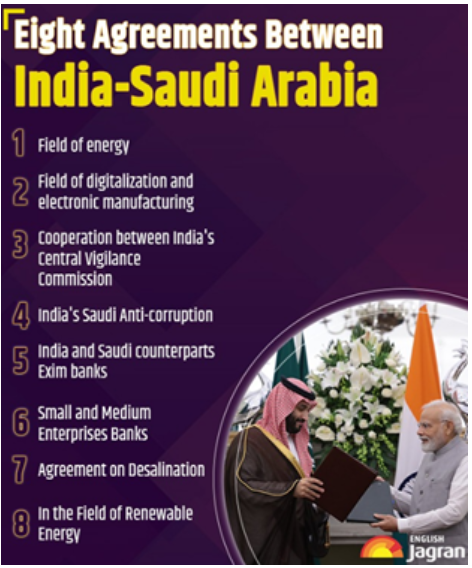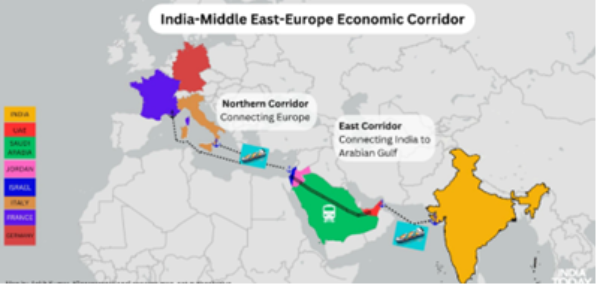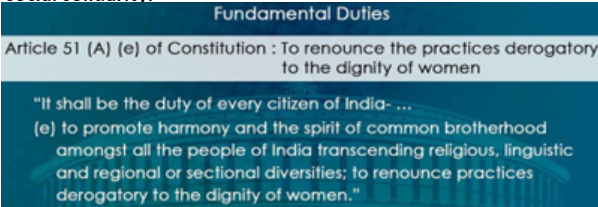Monday, 18th September 2023
PM Vishwakarma Scheme: Empowering Traditional Artisans
In News: Recently, Prime Minister Narendra Modi launched the PM Vishwakarma scheme in New Delhi on the occasion of Vishwakarma Jayanti, to give government support to workers engaged in traditional crafts and skills.
About the Scheme:
- The scheme was earlier announced during the speech on Independence Day.
- The scheme focuses on uplifting and empowering people engaged in traditional crafts.
- It has dual purpose:
- Providing financial support to artisans and craftspeople
- Preserving and celebrating India's age-old traditions, culture, and diverse heritage through local products, art, and crafts.
- The scheme is fully funded by the Union Government with an allocation of Rs 13,000-15,000 crore.
- Families associated with 18 such different sectors like Carpenters, Boat Makers, Armourers, Blacksmiths, etc. will be helped.
- The scheme is to help enhance the skills of workers employed in these fields and help them avail loans easily to aid their earnings.
- The Vishwakarma workers will be registered for free through Common Services Centres using the biometric-based PM Vishwakarma portal.
- They will then be provided recognition through the PM Vishwakarma certificate and ID card, given skill upgradation involving basic and advanced training, a toolkit incentive of ₹15,000, collateral-free credit support up to ₹1 lakh (first tranche) and ₹2 lakh (second tranche) at a concessional interest rate of 5%, incentive for digital transactions and marketing support.
- A toolkit booklet has also been released in 12 Indian languages, with accompanying video elements, to aid the knowledge of workers on new technologies in their field.
- Five lakh families will be covered in the first year and 30 lakh families over five years.
- The scheme also aims to ensure that Vishwakarmas are integrated with the domestic and global value chains.
Significance of the Scheme:
- Preservation of traditional skills and practices: It strives to support and maintain a customary family-based practise of transferring knowledge from one generation to the next. This epitomises India's cultural tradition, in which skill and knowledge are passed down through families.
- Quality upgradation: By providing skill upgradation, training, and toolkit incentives, it focuses to enhance the quality of products and services offered by artisans.
- Integration into Value Chains: The scheme is designed to integrate artisans and craftspeople into both domestic and global value chains. By doing this artisans can sell their products to a broader customer base, potentially increasing their income and sustaining their livelihoods.
- Wider Market Access: The scheme focuses on marketing support and incentives for digital transactions helps artisans expand their market reach. It assists them in tapping into domestic and international markets, thereby creating more opportunities for growth and recognition.
Challenges associated with the implementation of the scheme:
- Addressing the disparity: Artisans in rural areas may face different challenges compared to those in urban areas. Addressing these disparities and ensuring that all eligible artisans can participate in the scheme is essential.
- Effective monitoring and evaluation mechanisms are critical to prevent misuse of funds and ensure that artisans are not excluded from the scheme.
- Digital Literacy: Providing training and resources for digital literacy is a challenge (particularly for those who may not be familiar with digital technologies) that needs to be addressed to maximize the scheme's impact.
Climate change causing deluge across the world
In News: Recently, more than 11,000 people were killed and 30,000 were displaced in Libya after torrential rains caused once-in-a-century floods that burst dams and swept away buildings.
Floods due to the Mediterranean storm Daniel:
- More than 11,000 people were killed and 30,000 were displaced in Libya.
- Severe rainfall inundated parts of central Greece, north-western Turkey, southern Brazil, central and coastal Spain, southern China, Hong Kong and the southwestern US.
- While a Mediterranean storm called Daniel led to floods in Libya, Greece and Turkey, a cyclone wreaked havoc in Brazil and another storm known as Typhoon Haikui caused flooding in Hong Kong and China.
- These extreme weather events took place against the backdrop of soaring global temperatures.
Relation between flood and climate change:
- Although it is unclear if climate change is directly causing floods, experts say that it is undoubtedly making many of the elements that do so.
- Heavier Precipitation: Since more water vapour is evaporated from land, the oceans, and other bodies of water at higher temperatures, a warmer atmosphere may contain more moisture. The atmosphere can store around 7% extra moisture, according to experts, for every 1-degree Celsius increase in average temperature. As a result, precipitation becomes more intense, persistent, and/or frequent during storms, increasing the risk of catastrophic floods.
- Amplification of Drought: The earth has gotten both drier and wetter as a result of rising average temperature. Droughts can be made worse by warmer air sucking moisture from the soil. On the other hand, warm air can store more moisture, which allows it to carry more water into a wet area.
- Rising Sea Levels: The melting of glaciers and ice sheets brought on by higher global temperatures has raised sea levels, increasing the danger of flooding in coastal areas. According to a 2022 report by NOAA Climate, the global mean sea level has risen about 21–24 centimetres since 1880.
 Hard to attribute floods to climate change:
Hard to attribute floods to climate change:
- Particularly for the most devastating floods, which occur less frequently, there are few historical records.
- There are too many variables involved to point out one to be held responsible for flooding in a location (such as regional weather patterns, soil characteristics, and geography of the affected area).
- In the same way, researchers are still trying to determine how climate change and tornadoes are related. However, not all severe weather events are like this.
- There is enough evidence to show that global warming has increased the number of hot days.
Other factors that affect flooding:
- Local conditions like topography and how wet the soil is contributing to the flood development. E.g., drier soils are more capable of absorbing most of the rainfall in comparison to wetter soils — however, both really dry and really wet soils can’t absorb much water.
- Weather patterns: In the 2022 Australian floods much of the eastern coast of the country was inundated due to persistent heavy rainfall.
- Deforestation: A 2007 study done by researchers from Australia’s Charles Darwin University and the National University of Singapore found that with every 10% increase in trees being cut down, the flood risk increases by up to 28%.
- Inadequate maintenance of infrastructure: In Libya’s port city of Derna, the severity of floods was so huge because heavy rainfall caused two of the city’s dams to burst — they collapsed under the pressure of water gathered behind them during the storm.
- Human encroachment into floodplains: In July, Delhi witnessed its worst floods in history. The Yamuna River rose to 208.66 meters, submerging the Ring Road and leaving Kashmere Gate, Civil Lines, ITO, and Rajghat waterlogged. The main reason behind the deluge was excessive encroachment.
https://indianexpress.com/article/explained/explained-climate/climate-change-affects-floods-8941878/
Medical Textiles - Edukemy Current Affairs
In News: Recently, the Ministry of Textiles organized the ‘Meditex 2023’ International Conference on Scope and Opportunities in Medical Textiles.
About
- Medical textile is a result of the combination of textile technology and medical science known as Medical textiles or Med-tech.
- Some examples of medical textiles are hygienic materials hospital bed sheets, curtains surgical masks, gowns, etc.
- Medical textiles are used in operation theaters, even surgical threads, bandages, artificial bones, ligaments, artificial kidneys, and livers, there are touches of technological and smart textiles everywhere.
Features of Medical Textiles
- Textile materials must be non-toxic.
- Must be resistant to allergens and cancer.
- Textile materials must be biologically compatible.
- Complete good dimensional stability.
- It has air permeability and waterproofing properties.
- Resistant to acid and alkali.
- The quality of the fabric should be good.
- Re-wash and reusable.
Types of Fibers Used in Medical Textiles
Commodity Fiber:
- Natural and Regenerated Fibers: Cotton, Silk, Wood Pulp, Viscose.
- Synthetic fibers: polyester polypropylene, polyethylene, polyamide, PTFA, carbon, glass, silica.
Specialty Fiber:
- Collagen, calcium alginate, chitin, chitosan.
Natural Polyphenols to Combat Alzheimer’s Disease
In News: Potential treatment route for Alzheimer's disease found in natural polyphenol
About
- Naturally occurring plant-based polyphenols (PPs) like tannic acid found in twigs of trees like Chestnut and Oak can modulate the ferroptosis- Alzheimer’s Disease axis to yield a safe, cost-effective strategy for combating Alzheimer’s disease (AD) and reduce the societal burden of this debilitating neurodegenerative disorder.
- Ferroptosis, an iron-dependent form of programmed cell death, has emerged as a significant contributor to the development of AD. Several hallmarks of AD, such as abnormal iron build up, lipid peroxidation, reactive oxygen species (ROS), and reduced activity of the antioxidant enzyme glutathione peroxidase 4 (GPX4), align with the characteristics of ferroptosis.

Santiniketan - Edukemy Current Affairs
In News: Recently, Rabindranath Tagore’s Santiniketan was declared as a Unesco World Heritage.
About
- The UNESCO World Heritage designation acknowledges the cultural and educational significance of Santiniketan, preserving its unique architectural heritage and raising global awareness of Rabindranath Tagore's legacy.
- Santiniketan had its origins as an ashram established by Debendranath Tagore, the father of Rabindranath Tagore, with the vision of creating a sanctuary for meditation and fostering unity among people, regardless of their caste or creed.
- The architectural style of Santiniketan represents a departure from the British colonial and European modernist influences of the early 20th century.
- It draws inspiration from ancient, medieval, and folk traditions across Asia, embracing a form of pan-Asian modernity.
- Architectural structures of Santiniketan, dating back to the 19th century, bear historical significance in the founding of Santiniketan and its association with the universal spirit, symbolizing a revival of religious ideals in Bengal and India.
Banning Glue pads for rodent control
In News: Recently, Delhi has joined several Indian states in banning glue pads for rodent control.
About
- Glue pads are widely criticized as a cruel method of rodent control because they subject trapped animals to prolonged suffering, as they slowly die from starvation and extreme pain while stuck in the strong adhesive.
- Rat poison, often used as an alternative to glue pads, is similarly considered inhumane. It poses risks not only to the targeted rodents but also to the wider ecosystem. Animals that consume poisoned rats, such as cats, snakes, mongooses, and predatory birds, can be harmed by the toxins, leading to unintended consequences and harm to non-target species.
- The Animal Welfare Board of India (AWBI) took a stand against the use of glue pads for rodent control by releasing advisory notices in both 2011 and 2021, effectively banning their use.

Rubber - Edukemy Current Affairs
In News: Rubber Board to increase the area under rubber in Northeast.
About
- The Rubber Board of India is embarking on a project aimed at expanding the area under natural rubber cultivation in the northeastern states of India.
- This initiative excludes Sikkim but includes the state of West Bengal.
- The objective is likely to promote and support the cultivation of natural rubber in the northeastern region, which could have economic and environmental benefits for the area and the rubber industry as a whole.
About Natural Rubber
- Natural rubber is a polymer derived from isoprene, an organic compound. It is a cohesive, elastic solid obtained from the latex of several tropical trees, with Hevea brasiliensis being the most significant source.
- Rubber trees typically have an economic lifespan of approximately 32 years in plantation settings.
- Natural rubber can be sourced from various plants, with the most common being the Pará rubber tree (Hevea brasiliensis). This tree thrives when cultivated and produces latex for several years.
- Congo rubber is obtained from vines within the Landolphia genus. These vines cannot be successfully cultivated, leading to the extensive harvesting of wild plants in the Congo for their latex.
- Additionally, rubber can be derived from dandelion milk, which contains latex and can be utilized in rubber production.
Condition Required
- Rubber is a tropical tree. It requires high temperature throughout the year – ranging between 20°-35°C or average monthly mean of 27°C. Less than 20°C temperature is detrimental. Similarly, rubber also requires heavy rainfall.
- The annual average rainfall of not less than 200 cm is optimum. Rubber tree thrives well when the distribution of rainfall is uniformly high all over the year. The equatorial regions of the world are suitable for rubber cultivation.
- Rubber is grown in literate or loamy soil, mostly in slope and undulated land or slightly high elaborated flat land where there is no possibility of water stagnation, and having well drainage facilities
Critical Raw Materials Act - Edukemy Current Affairs
In News: EU Parliament votes in favor of Critical Raw Materials Act
About
- Critical raw materials refer to natural resources that hold a strategic value for a country or region because of their economic, industrial, and geopolitical significance.
- These resources play a vital role in various industries, encompassing technology, manufacturing, energy, and defence, and their accessibility can profoundly affect a nation's economic stability and competitive edge.
- Critical raw materials encompass rare earth elements, lithium, cobalt, graphite, platinum group metals, and specific minerals and metals pivotal for advanced technologies and the development of clean energy solutions.
A time for South-South Learning
Exam View: Achievements of India as G20 president; Challenges in front of G21; Global South steer the world towards food and nutritional security amidst climate change
Context: India’s G20 presidency has been lauded for creating a global consensus amidst the growing global divergence and collectively bringing out the G20 New Delhi Leaders’ Declaration.
Achievements of India as G20 president:
- Reshaping the global mindset: India’s G20 presidency will be remembered as a catalyst in reshaping the mindset of developed nations and integrating the aspirations of Africa, into the mainstream.
- Inclusion of the African Union in the G20, now known as the G21: India’s masterstroke with inclusion of the African Union in G20, acknowledges the significance and potential of Africa as a vital partner in global development and stability. The new G21 will now comprise 84% of the world’s population.
- Fostering South-South learning and collaboration: India has proposed initiating a comparative analysis cross-learnings and innovative solutions to address the challenges faced by both regions
- Raising awareness of the challenges faced by developing countries: India has used its G20 presidency to highlight the issues of food and nutritional security, climate change, and poverty.

- Sharing India's best practices: India has shared its experiences in areas such as sanitation, bio-fortification and digital public infrastructure with other countries.
Challenges in front of G21:
- Population growth, persistent poverty, and widespread undernourishment amidst climate change:
- High concentration of undernourished population: India and Africa, constituting 36% of the global population and are home to 69.4% (503 million) of the world’s undernourished people in 2020-22.
- Child Malnutrition: India and Africa together account for 67% and 75.8% of the world’s children under five afflicted with the malnutrition problems of stunting and wasting.
- Ensuring that Africa has a meaningful voice in the G21 and that its priorities are reflected in the group's agenda.
- Building the capacity of African countries to implement the G21's decisions and recommendations: This includes providing financial and technical assistance, as well as helping African countries to develop their own national and regional development plans.
- Consensus building: G21 can become too large and unwieldy, and that adding more members has made it more difficult to reach consensus on important issues.
How can the Global South steer the world towards food and nutritional security amidst climate change?
- International Agricultural Trade: International borders need to stay open for agricultural trade. India exported 85 million tonnes of cereals to the world, contributing to global food security.
- Climate financing:
- Developed countries: Developed countries must commit to providing $100 billion for the loss and damage caused by climate change. This commitment will pave the way for large-scale climate mitigation and adaptation efforts in developing economies.
- Role of World Bank: It could play a catalytic role in mobilising funds even from the private sector to address the global challenges of poverty reduction, ensuring food and nutritional security and combating climate change through adaptation and mitigation policies
- Private capital investments are essential to complement the current sources of financing. This could unlock more than $6-7 billion in lending for poorer nations to fight climate change.
- Promote South-South cooperation for nutritional security: India and Africa could foster learning and collaboration in the pursuit of sustainable agriculture and food systems.
- Nutrition-sensitive agriculture: Scaling up bio-fortification of staple crops, an innovative and cost effective technique, can ensure availability of nutritious diets in areas affected by chronic malnutrition.
- New varieties of nutrient-rich staple food crops like iron and zinc biofortified pearl millet, zinc-bio fortified rice and wheat, and iron biofortified beans have been developed.
- Invest in women's education and empowerment:
- Reduction in under nutrition: Empirical analysis at ICRIER using NFHS (2019-21) data highlights that mothers’ education and BMI index have a strong association with reducing undernutrition among children.
- Increase in the female labour force participation and fostering long-term economic growth could be ensured through investment in women’s education.
- Investments in WASH(Water, Sanitation and Hygiene) initiatives: This could bring a multiplier effect on nutritional outcomes. Swachh Bharat Abhiyan, which aims to eliminate open defecation and eradicate manual scavenging has multiplier effects in terms of nutrition and poverty reduction.
Source: https://epaper.indianexpress.com/3763768/Delhi/September-18-2023#page/11/3
Share the article
Edukemy’s Current Affairs Quiz is published with multiple choice questions for UPSC exams
MCQ
Get Latest Updates on Offers, Event dates, and free Mentorship sessions.

Get in touch with our Expert Academic Counsellors 👋
FAQs
UPSC Daily Current Affairs focuses on learning current events on a daily basis. An aspirant needs to study regular and updated information about current events, news, and relevant topics that are important for UPSC aspirants. It covers national and international affairs, government policies, socio-economic issues, science and technology advancements, and more.
UPSC Daily Current Affairs provides aspirants with a concise and comprehensive overview of the latest happenings and developments across various fields. It helps aspirants stay updated with current affairs and provides them with valuable insights and analysis, which are essential for answering questions in the UPSC examinations. It enhances their knowledge, analytical skills, and ability to connect current affairs with the UPSC syllabus.
UPSC Daily Current Affairs covers a wide range of topics, including politics, economics, science and technology, environment, social issues, governance, international relations, and more. It offers news summaries, in-depth analyses, editorials, opinion pieces, and relevant study materials. It also provides practice questions and quizzes to help aspirants test their understanding of current affairs.
Edukemy's UPSC Daily Current Affairs can be accessed through:
- UPSC Daily Current Affairs can be accessed through Current Affairs tab at the top of the Main Page of Edukemy.
- Edukemy Mobile app: The Daily Current Affairs can also be access through Edukemy Mobile App.
- Social media: Follow Edukemy’s official social media accounts or pages that provide UPSC Daily Current Affairs updates, including Facebook, Twitter, or Telegram channels.







